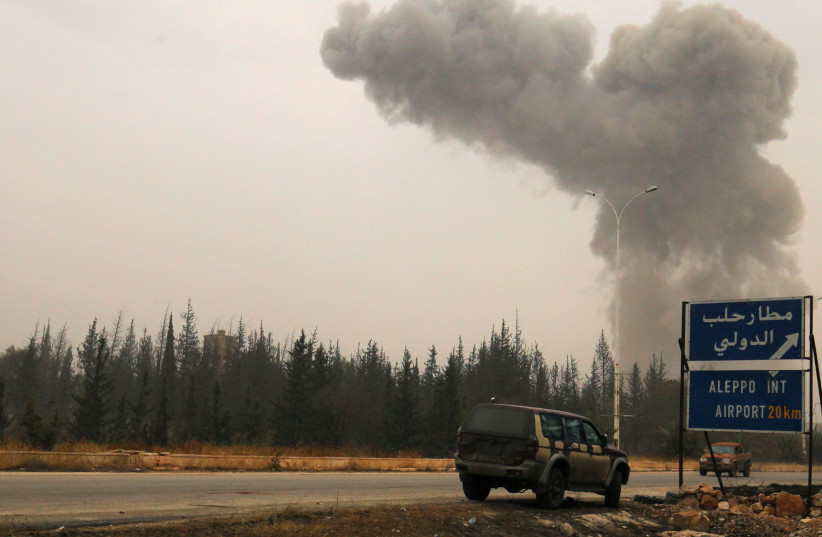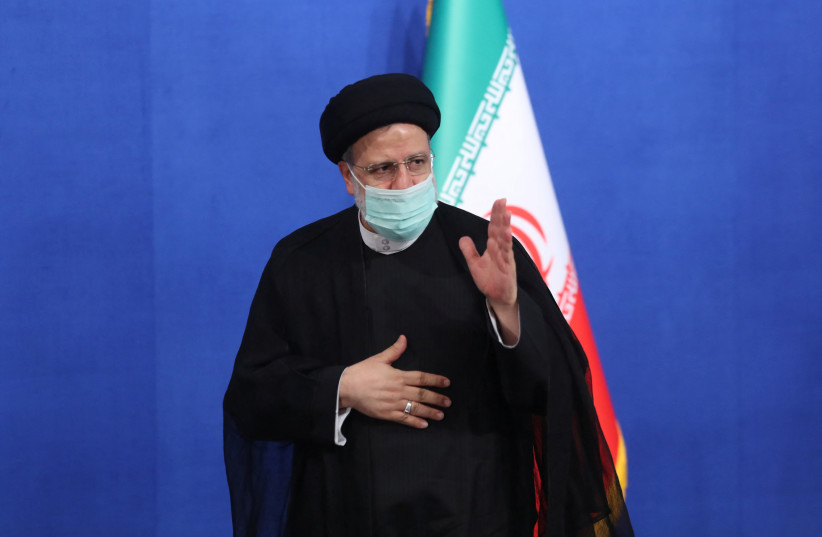The recent rounds of airstrikes in Syria are raising tensions between Iran and the US as well as potentially between Iran and Israel. They might even affect Russia.
The Syrian Defense Ministry said that at "approximately 20:00 this evening, the Israeli enemy targeted Aleppo International Airport with a missile strike that caused material damage to the airport."
These strikes come in the wake of two rounds of airstrikes carried out by the US against Iranian affiliates in Syria over the last two weeks.
The spotlight on Israel matters because it comes as pro-Iranian media, like Al-Mayadeen and also Iran’s own Fars News reported the strikes. What Iran is doing is highlighting these strikes in contrast to past incidents.
Additionally, rumors seem to indicate a return to the Iran deal while the US has carried out two rounds of airstrikes on Iranian IRGC affiliates in Syria. This was apparently in response to a large drone attack from Iraq which targeted US forces in Syria. It also comes as Russia is working on acquiring Iranian drones and reports have circulated saying Russia moved an S-300 battery from Syria back to Russia.

What do all the airstrikes mean?
The recent incidents in Syria raise many questions about how the Syrian battlefield may be changing and how Syria is becoming a focus of activity, both regionally and globally.
While Iran has been entrenching Syria for years, moving weapons to Hezbollah and constructing bases, moving drones and even trying to move air defenses to Syria. Overall, the focus on Syria matters now because to the Iran deal.

A lot is happening in the region in this regard: Iran is focused on the political chaos in Iraq; Iran’s Foreign Minister flew to Russia on August 30; the US expressed concern about the amassing of weapons by Hezbollah as the UNIFIL mandate was renewed. And, Israel’s Prime Minister Yair Lapid spoke to US President Joe Biden, during which Lapid praised US airstrikes against Iranian affiliates in Syria.
How can we make sense of this?
The Alma Research & Education Center noted on the evening of August 31, “a short time ago, the #Aleppo international airport in northern Syria was attacked from the air. Apparently, the runway and warehouses were attacked. It seems that the airport has become part of the air corridor in addition to the Damascus airport.”
Why is Iran shifting its air corridor north to Aleppo? Is it because the previous corridor from Albukamal or T-4 heading to Damascus and then to Lebanon or toward the Golan, has become less sustainable? Is this why Iran attempted to attack US forces in Tanf near the Jordanian border and also the threatening US forces in eastern Syria?
After all, Iran must transit between Tanf and the Euphrates to extend that corridor. Using Aleppo can work for it because it is in northern Syria, but it is also close to Turkey as well as to the Russians in Latakia. If the Russians are moving S-300s out of Syria or focused on Ukraine at the moment, then Iran may be taking advantage of that reality.
Overall, the recent airstrikes in Syria paint a picture of heightened tensions right as the West is talking about a return to the Iran deal.
This presents a picture of what the future may look like even with a deal; with Iran increasingly moving its weapons to Syria and toward Lebanon, even as it gets something from the West. With Russia now working closely with the Iranians and potentially acquiring their drones and looking for more defense connections with Tehran, the ramifications loom over the Middle East, and especially over Syria.
